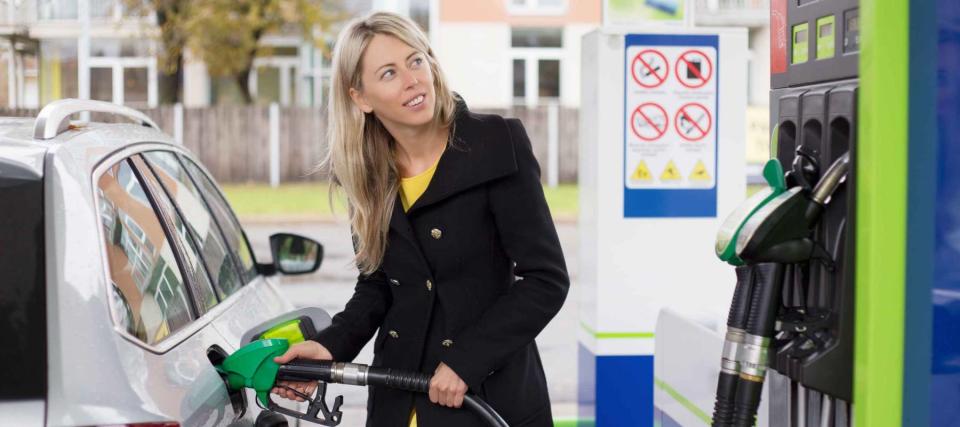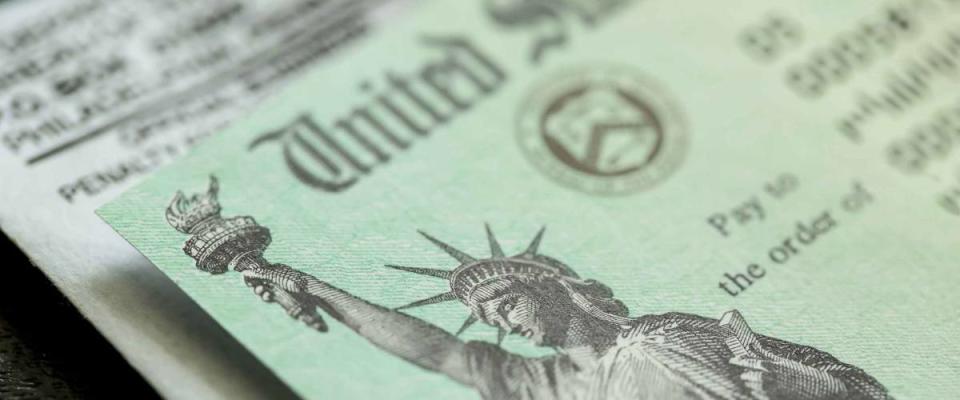Highest gas prices in years are on the way, new government forecast says

Gas prices have been rising steadily for months — and they're not done yet. A new government forecast says prices at the pump could reach their highest levels in three years this summer, because of heavier demand for fuel.
Gasoline will be considerably more expensive than last year, when the pandemic curtailed driving and fuel use, the U.S. Energy Information Administration says.
The price-tracking website GasBuddy says the national average for gas already is up by nearly $1 from a year ago, at $2.86 a gallon.
Here are six reasons gas prices are going up, plus predictions of how high they're likely to go — so you can start thinking about ways to save money to help pay for your costlier fill-ups.
1. Crude oil prices have been surging

As with gasoline, the cost of crude oil tanked in 2020 while COVID-19 was wrecking economies and stopping people from traveling. To prop up oil prices, the OPEC cartel and its allies slashed oil production.
But lately, crude prices have been soaring — because OPEC has been slow to boost output again. West Texas Intermediate crude has been trading above $60 a barrel for the first time in over a year, and Goldman Sachs expects prices to hit $72 by summer, according to multiple media reports.
OPEC and the allies announced on April 1 that they'd gradually raise production, which could help stabilize prices.
Though gas prices are going up, mortgage rates remain historically low — meaning if you're a homeowner, one way to offset the rising cost of fuel is by refinancing your home loan. The mortgage data and technology provider Black Knight recently said 11.1 million homeowners would save an average $277 a month by refinancing.
2. Vaccinations are expected to boost travel

As more Americans are vaccinated and life begins to return to something closer to normal, people are likely to drive and fly more. And that trend will contribute to rising fuel costs.
"As COVID-19 impacts continue to subside with improved mitigation and vaccination efforts, vehicle miles traveled will increase, resulting in more gasoline demand," the Energy Information Administration says in its summer fuels outlook, released this month.
A good way to fight higher gas costs is by shopping around for lower prices, because what you pay can vary by up to $1 a gallon within the typical metro area, according to GasBuddy.
Also, you might want to consider replacing your vehicle with a more fuel-efficient model. This tax season, you could turn your tax refund into a new set of wheels.
3. Stimulus checks have put consumers in a spending mood

Since President Joe Biden signed his $1.9 trillion COVID relief package nearly a month ago, Americans have been receiving a third round of stimulus checks, this time for up to $1,400 each. The aid was expected to help lift gas prices by prompting consumers to get out and shop.
Goldman Sachs has estimated that $2 trillion in economic stimulus spending over 2021 and 2022 could pump up U.S. oil demand by roughly 200,000 barrels a day. If supplies don't keep up, that higher demand will mean higher fuel prices.
As gasoline gets more expensive, another way for consumers to balance out those higher costs is by spending less on other purchases.
You might download a free browser add-on that will point you in the direction of lower prices and other savings every time you shop online.
4. A harsh winter was tough on refineries

The recent brutal winter weather in Texas seriously impacted the state’s oil production, forcing refineries to close in America’s top crude-producing state.
Eleven refineries in Texas were shut down at least partly because of the extreme winter temperatures, so as much as 20% of the country’s total refining capacity went offline, GasBuddy says.
"Oil prices have continued to rally as global oil demand recovers from the worst of the COVID-19 pandemic, and now the extreme cold weather shutting refineries down, U.S. motorists just can’t seem to catch a break," GasBuddy analyst Patrick De Haan said in mid-February.
It took the refineries weeks to catch up. Bloomberg reported that two of Texas' 30 refineries were still offline in early April because of storm-related issues.
5. The pandemic knocked out refineries, too

Long before the storms, the oil and gas industry was reeling from plummeting fuel sales caused by COVID. By late 2020 there were more than a dozen refinery closures that reduced U.S. production by more than 1 billion barrels per day.
"It's possible some capacity could come back online in the 2022-2023 timeframe, but by and large, we think these closure announcements will mostly prove permanent," Raymond James analyst Justin Jenkins said about the refinery shutdowns in a December report.
U.S. oil and gas producers lost tens of thousands of jobs last year, and laid-off workers were left scrambling to make ends meet.
Many struggling Americans have been leaning on credit cards more than usual, to get by during the pandemic. If that's you, a lower-interest debt consolidation loan can cut the amount you pay each month — and help you afford the higher prices at the pump.
6. Costlier summer gas could push prices close to $3

U.S. drivers could find themselves spending close to $3 a gallon for gasoline, on average, by Memorial Day, according to GasBuddy and auto club AAA.
Those predictions factor in the transition to pricier summertime blends of gasoline, which is now underway. Higher-grade gasoline is used in summer months to reduce emissions that cause smog; those blends can cost up to 15 cents more per gallon, according to the service station trade group NACS.
The Energy Information Administration forecast looks for drivers to pay an average $2.78 per gallon this summer, the highest since 2018. But GasBuddy's De Haan warns we could see "a run at a national average of $3 per gallon in the months ahead."
Looking for ways to save on the cost of driving will be a smart strategy — but, then again, it's always a wise practice. For example, regular comparison shopping for car insurance can save you as much as $1,100 a year, studies have found.

 Yahoo Finance
Yahoo Finance 